FThe French Press goes by many names—Press Pot, Coffee Press, Coffee Plunger, and even Cafetière, if you call the United Kingdom home. Despite the aliases, these devices are all based on the original model, which a designer from Italy named Attilio Calimani patented in 1929.
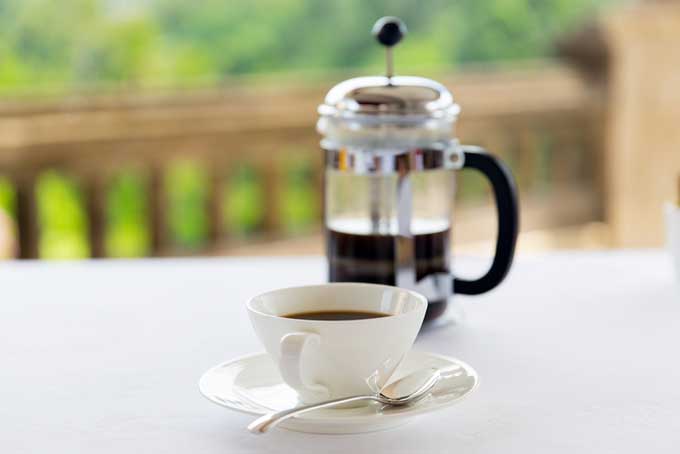
Although manufactured in various sizes and styles to adhere to each user’s consumption needs, all French Presses consist of a beaker, usually made out of glass, plastic, or metal, in which hot water and coffee are placed to steep.
The lid of the container has a built-in plunger that is connected to a wire or mesh filter. This filter fits snugly against the circumference of the beaker, making a seal around the edges.
After a set amount of time for brewing, the lid is placed on top and the grounds are then pushed to the bottom of the press, while the liquid is allowed to pass through the strainer, remaining on the surface above the grounds.
The pressed brewing method provides consistently full-bodied coffee, due to the fact that it eliminates the need for paper filters. Paper robs the coffee of oils that are essential in attaining the full flavor and qualities of the bean, while simultaneously contributing a strange taint to its taste.

Additionally, users are given a substantial amount of control over this brewing method as opposed to others. Water temperature, steeping time, and several other factors can easily be adjusted using a French Press. It’s also convenient, fast, and allows for a quick clean up.
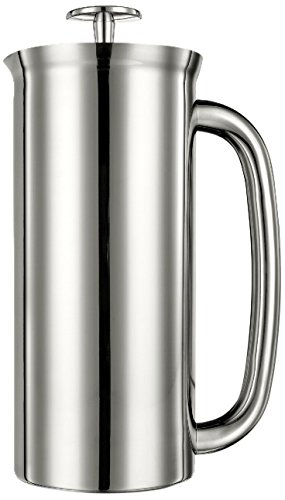
Foodal recommends the The Espro Vacuum Insulated Stainless Steel Press available on Amazon.
The most common complaint about pressed coffee is its tendency to have a murky and gritty residue. Although some innovators in the coffee industry have found solutions to this dilemma, such as Bruce Constantine and Chris McLean with their Espro Press, the vast majority of presses will inevitably leave a deposit of grit and film.
Thankfully, there are several tips and tricks that have been passed down by the barista gods for curbing this unfortunate condition.
By pressing your coffee in the manner listed below, you’ll be able to create an almost perfect cup of joe:
1. Heat Your Water. The first step is to pre-boil your filtered water. The ideal temperature for most coffees is 195-205°F.
2. Grind your coffee. This is a very important step. The commonly recommended ratio is 8-9 grams (or slightly more than one tablespoon) to every four ounces of water, but you can adjust the measurements slightly to taste. You want the grinds to be as even as possible – they should be coarse enough that they won’t be able to escape through the mesh or wire filter, but also fine enough to add the perfect amount of flavor and body to your cup.
3. Add the grounds and the water. Place your fresh grounds in the basin of your French Press before pouring your hot water evenly over them. After the liquid has been added, many users choose to either swirl or gently stir the coffee with a spoon, chopstick, or similar utensil.
4. Extract. Allow the press to sit uncovered for 3-5 minutes. Do not cover the coffee with a lid just yet, to allow the coffee to attain the maximum bloom.
5. Skim. At the end of the allotted time, take a large spoon or scooping device and skim off the grounds that are floating on top of the coffee. While this is a step that many people do not implement or deem necessary, it can be very helpful when it comes to removing some of the grittiness and fine excess particles.
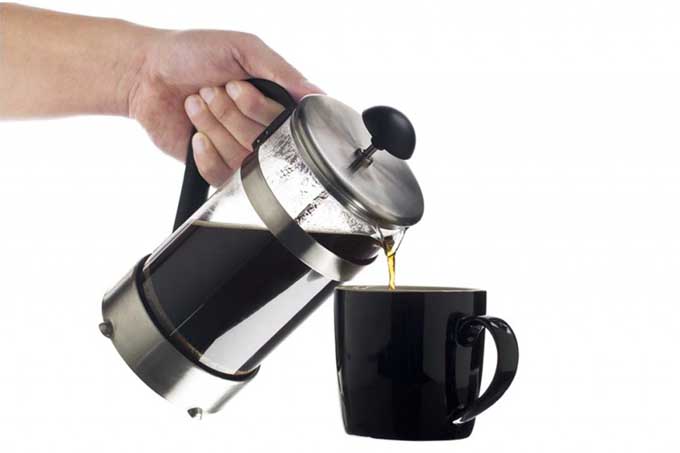
6. Plunge. Set your lid securely on top of the beaker and slowly press straight down on the plunger. Once the filter is completely submerged, you’re ready to go! As you pour, make sure that you hold on to the lid firmly, so that dumping is avoided.
7. Enjoy!
EXTRA TIP: Drink your coffee right away. As it remains sitting in the press, it will continue to brew—even after being plunged. So if you’re not planning to consume it immediately, transfer the liquid to another container.
Looking for a suitable model? Give Foodal’s French Press Buying Guide a read today!
About Kate Ackerman
A compulsive list-maker with a profound love for art, the outdoors, good beer, and Star Wars, Kate is a stereotypical Washington native (read: rain-loving coffee addict). And while she calls freelance writing her career, she's often found traveling the world, plunking on pianos, or spending time with her well-loved bulldog.

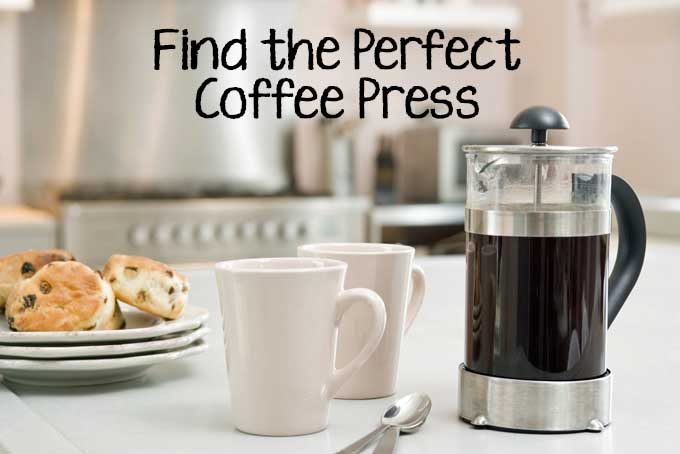
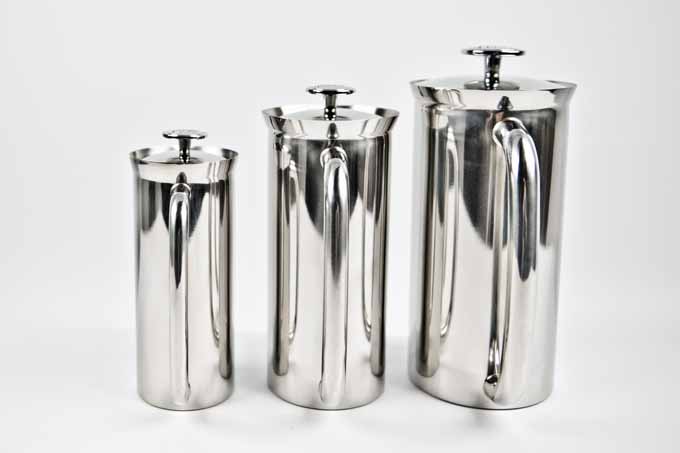
My friend swears by her press. I’ve only had anything of the sort when over by her & I will admit that the quality is better than what I’m used to. However, I’m the worst judge because I prefer tea. People have been trying to convert me forever now.
You can actually brew tea in French Presses, too!
I love french presses. They are definitely the best choice, in my opinion, for a delicious cup of coffee. I’m using something else right now, but after reading this, I’ll probably switch back to my press. I have 3 or so presses, and I swap them out, depending on how many cups I need, but that one you’ve linked to is a thing of beauty. It’s been added to my wish list, and hopefully someday, will be added to my kitchen!
I do like my cafetiere a lot but I’d love to find one that would hold the equivalent of just 2 mugs of coffee. If I just fill my press halfway, I find the coffee gets colder quicker so I’d like to have something a little smaller.
I’d suggest finding a stainless steel press or immediately transferring the fresh-brewed liquid into a more insulated container. The latter method will also prevent the extraction from steeping too long.
If you like the body of a French pressed coffee, but lack a press, you can always make a cold brew coffee in your refrigerator. Your point about paper filters is spot on, but within the scope of this method, I don’t think it matters too much s you get a bolder, fuller tasting coffee. Not to mention I can’t think of a way to do it without it.
You start with a gallon of water, simple syrup (sugar dissolved in water, a bar staple,) and your favorite blend of coffee. You spoon the desired amount of coffee grounds into a paper filter, the more the stronger, less if you prefer a lighter taste. You then take the coffee filter, and make a little pouch out of it, and use a rubber band to secure it and keep the grounds from escaping.
Add your simple syrup to your water, which doesn’t have to be warmed (but can be. A boil is not optimal.) Then, simply drop your coffee pouch into the water, cap your jug or jar and give it a good shake. Put it in the refrigerator for no less than 24 hours, to fully steep the grounds.
The final product is rich, and has almost a chocolatey flavor to it, depending on the coffee your prefer and what kind of roast it is. You’ll have to adjust the amount of simple syrup you use to fit your taste, and seeing as this is a cold beverage regular sugar won’t blend so well.
This is a great suggestion! I might write an article on my experience with cold brewing. I’ve found that there are some varieties that make much better iced coffees than others (and certain methods are AMAZING).
To be honest I have never skimmed my coffee, but when I make my coffee it’s hard to make a pot with people who have different tastes. I prefer strong coffee and a smaller amount and some of my older more frugal friends like to make a whole pot and then keep it for later.
I would rather make a fresh pot, I’m not sure if it’s an age thing or a UK v US thing as all my friends in the UK will make a couple of pots and prefer it fresh, whilst in the US most people make a large pot and microwave the coffee if it gets cold. I usually refuse at that point as I know it will not taste good.
I’ve never been able to stomach microwaved coffee either and I’m glad that someone else thinks that it affects the taste too – I was thinking that it was all in the mind and I was just being fussy.
My grandma does this ALL the time, and I also find it disgusting!
I brewed coffee with a press exclusively for five years and loved it. The richness of flavor that the press attains is unmatched by any other method, and I’ve tried most of them. Once my daughter was born, however, I needed more volume to help me stay awake at work. I’m using a drip machine now, and really miss my press.
In college, there were times where I’d make a press to drink at breakfast and then I’d brew another (and then put it in a Thermos that kept it mouth-burning hot for HOURS) to take to class.
Interesting tips here – never knew about leaving the lid off, or skimming off the grinds before plunging. I’ll definitely give this method a go as I do find that coffee made in the cafetiere is not as smooth as the coffee I get from my drip/filter machine.
I also like the look of the Espro Vacuum Insulated press – looks very stylish, and would grace any breakfast table.
Am so ‘green’ as far as French Pressing is concerned 🙂 … even after reading the title on the dashboard area, i dared not to visit the page, only after reading a comment on the dashboard area once more in this regard, then… only then did my curiosity pique… never heard or read of this term before or the method of how to go about it… quite interesting i must say, i’ve bookmarked the page for several re-reads 😉
This brewing method is surprisingly really easy! Many people who are unfamiliar with the method tend to be hesitant, but I’d highly recommend trying it!
I have to agree. I was apprehensive as well. I was also a bit cynical. I couldn’t imagine that such a simple method could produce such wonderful results. As much as I love coffee, I wasn’t even interested in owning such a device. I kept thinking it was just so much hype, but I was wrong.
While very, very simple, the process does make a huge difference. I’m very glad that my husband nudged me in this direction. I’m now spoiled and much prefer fresh ground and pressed over any other cup.
You learn something everyday. Up until now, I’ve been unfamiliar with any of the terms described in this article. But I do have some interest in buying one and seeing what this is all about seeing that I love a good cup of coffee. I’d also like to test these taint removal tips to see how effective they are.
You can actually find decent examples for quite cheap (around the $20 range). It’s definitely worth a try! If you really enjoy it, you can always upgrade to higher-end models!
I never used a French press but it seems simple enough. It seems like it would be smoother than other types of coffee. U am a newbie in the coffee world but I need to know all that I can so that I can be a conisour.
Surprisingly, this one of the easiest methods of brewing! You can also find decent models for relatively cheap. I’d highly recommend checking it out!
I only use a French press at my house and actually threw my coffee maker away. Some people comment on how this is a bit longer of a process, but it’s worth the extra seconds. I am a barista and honestly feel that you really experience the coffee through a press. I would maybe recommend putting the lid on the top while waiting four minutes but not pushing down until the end. Normally, I like the temperature of my brew to be around 170; I really loathe any sort of burnt taste.
These devices require coarser grounds (so they don’t slip through the screen.) Perhaps check that your grinder is set accordingly or you’re not buying generically preground coffee.
This is a great method of brewing because you can figure out what works best with your own palate.